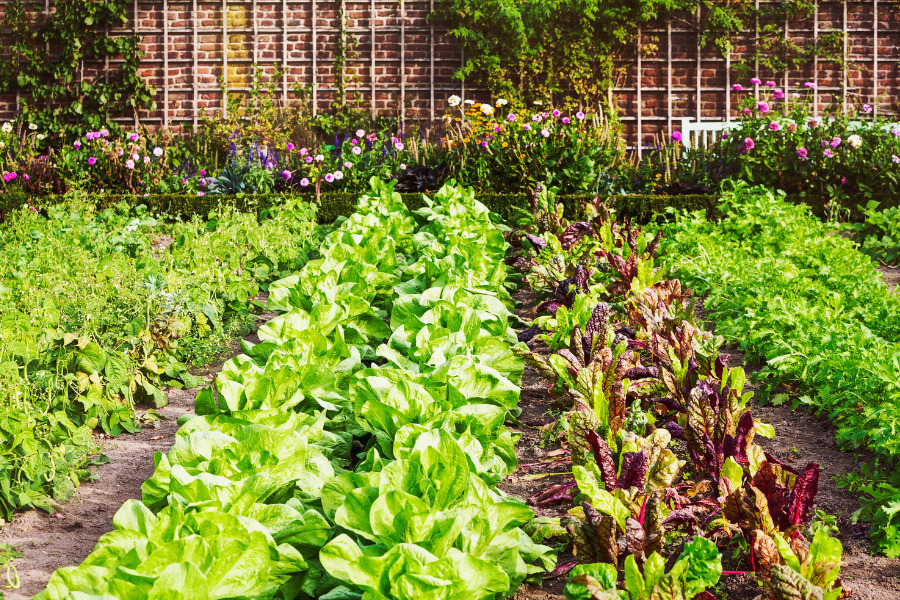
Have you ever considered growing your own vegetables? Starting a vegetable garden is a rewarding and fulfilling experience that provides numerous benefits. From enjoying the freshest produce to saving money and reducing your carbon footprint, cultivating your own vegetable garden is a step towards a healthier, more sustainable lifestyle. In this beginner’s guide, we’ll walk you through the process of starting a vegetable garden, covering everything from planning and planting to caring for your garden and harvesting the fruits (or vegetables) of your labor.
Gardening can be an incredibly therapeutic hobby, connecting you with nature and offering a sense of accomplishment as you nurture your plants from seedlings to harvest-ready produce. There are numerous ways to create a vegetable garden. It can fit any space, from sprawling backyards to small balconies. The satisfaction of biting into a juicy tomato or crisp lettuce that you’ve grown yourself is unmatched and will inspire you to continue exploring the world of home gardening.
Diving into vegetable gardening can seem daunting at first, but with the right guidance and a little bit of patience, even the most inexperienced gardener can create a thriving garden. In this article, we’ll outline the essential steps to start a successful vegetable garden, providing tips and tricks to help you along the way. So, grab your gardening gloves and let’s begin the journey towards a bountiful harvest of homegrown veggies!
Choosing the Right Location
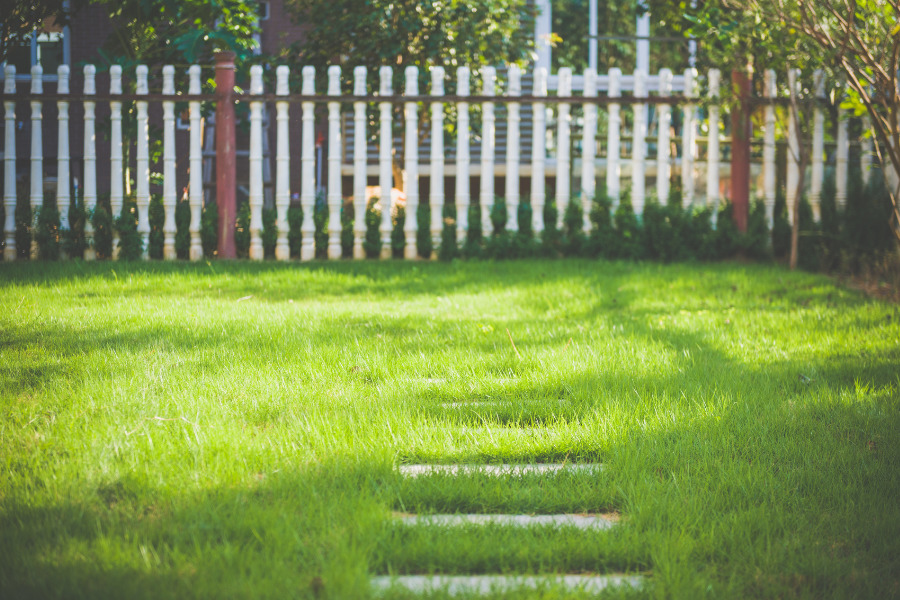
Proper Sunlight
One of the most crucial factors in starting a successful vegetable garden is selecting the right location. Vegetables need ample sunlight for growth and bountiful harvests. Choose a spot with at least six to eight hours of direct sunlight daily. Monitor your yard or balcony to find the sunniest spots and consider seasonal sun angle changes. Don’t worry if sunlight is limited; vegetables like leafy greens and root vegetables can tolerate partial shade.
Soil Amendments
In addition to sunlight, consider the soil quality of your chosen location. Vegetables thrive in well-draining, nutrient-rich soil. Perform a soil test to determine the pH level, nutrient content, and texture of your garden area. Most vegetables prefer a slightly acidic to neutral soil pH of around 6.0 to 7.0. If your soil is too acidic or alkaline, you can amend it with lime or sulfur, respectively. You can also improve soil structure and fertility by incorporating organic matter, such as compost or well-rotted manure.
Water Management
Access to water is another vital factor in choosing the right location for your vegetable garden. Vegetables require consistent moisture, especially during the hot summer months, to ensure healthy growth and high yields. Make sure your garden area is near a water source, like a hose or rain barrel, for easy and efficient watering. Additionally, try to avoid placing your garden in an area prone to flooding or standing water, as this can lead to root rot and other diseases. If your selected area has drainage issues, consider building raised beds or installing a drainage system to improve water management.
Garden Accessibility
Finally, consider the convenience and accessibility of your vegetable garden location. You’ll need to tend to your garden regularly, so choose a spot that is easily accessible from your home. A visible, nearby garden increases maintenance consistency and prompt addressing of issues like pests or diseases. Additionally, consider the layout of your garden beds and pathways to ensure there is enough room to move around comfortably while planting, weeding, and harvesting your vegetables. By carefully selecting the right location for your garden, you’ll set yourself up for a successful and enjoyable growing season.
Planning Your Garden Layout
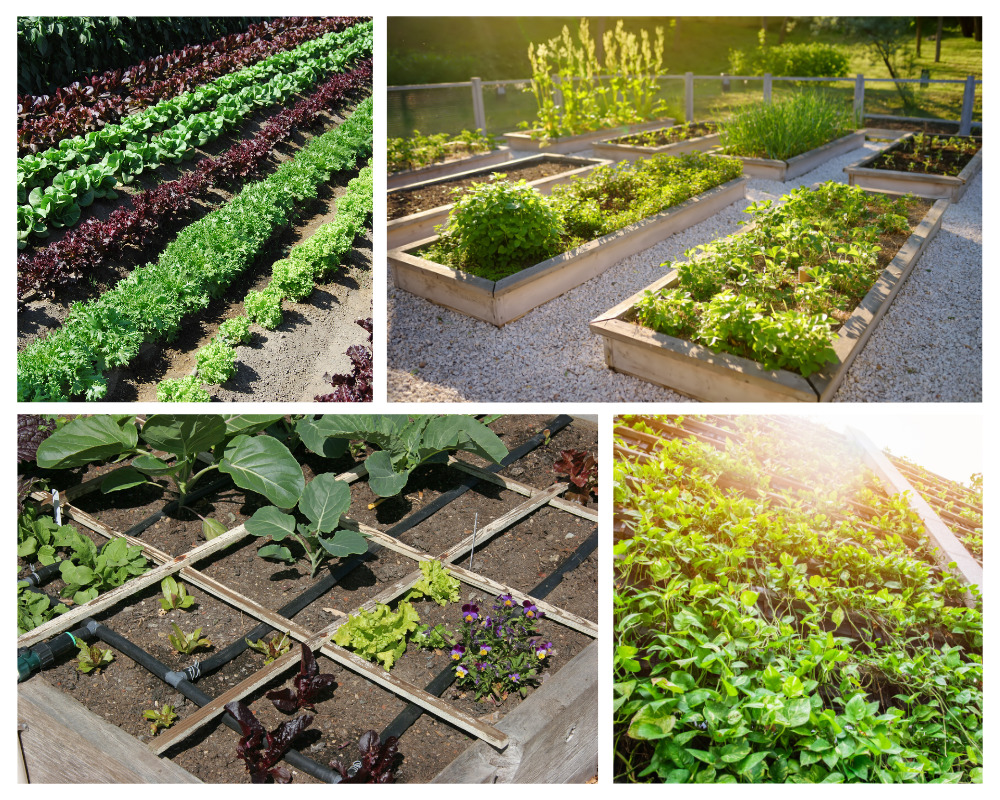
Measure and Sketch Garden Area
Starting a vegetable garden requires careful planning of your garden layout to create a successful and organized space that caters to the specific needs of each plant. Begin by sketching out your garden area on graph paper or using a digital garden planner, ensuring that you include measurements of the available space. This will give you a better understanding of the area you have to work with and help you visualize your garden design more effectively.
Specific Needs of Plants
As you plan your layout, consider the specific needs of each plant, such as sunlight requirements, spacing, and companion planting. Some plants prefer full sun, while others need partial shade. Be mindful of the plants’ mature sizes to avoid overcrowding and ensure they have enough room to grow. Incorporate companion planting techniques to improve pest control, enhance pollination, and boost the overall health of your garden.
Incorporate Vertical Gardening
In addition to considering the spacing between your plants, think about the benefits of vertical gardening. Vertical gardening allows you to grow more plants in a limited space by using trellises, wall-mounted planters, or even repurposed ladders. This approach is especially useful for small gardens or urban environments where space is at a premium. Vertical gardening also helps improve air circulation around your plants, reducing the risk of diseases caused by high humidity.
Garden Pathways and Access Points
Lastly, think about incorporating pathways and easy access points into your garden layout. These elements make it easier for you to tend to your plants, harvest your produce, and perform routine maintenance tasks. Ensure that the pathways are wide enough for you to comfortably move through the garden with your tools and equipment. Using materials like mulch, gravel, or stepping stones can help create a visually appealing and functional garden path. Proper planning of your garden layout will not only maximize your growing potential but also make your gardening experience more enjoyable and efficient.
Selecting Your Vegetables

Personal Needs
When starting the process of selecting your vegetables, first consider your personal preferences and dietary needs. Focus on growing the vegetables that you and your family enjoy eating the most. It’s also important to take into account any specific dietary restrictions or health considerations that may require certain types of vegetables.
Climate and Growing Conditions
Next, research the vegetables that are best suited for your local climate and growing conditions. Some vegetables thrive in warm, sunny climates, while others prefer cooler temperatures and partial shade. Consult local gardening resources or speak with experienced gardeners in your area to determine which vegetables are likely to flourish in your region.
Plant Spacing
Consider the space available in your garden when choosing vegetables to grow. Some plants, like tomatoes and peppers, require a larger area to grow properly, while others, like lettuce and radishes, can be grown in smaller spaces. Keep in mind that some vegetables, like squash and pumpkins, are sprawling plants that need ample room to spread out, while others, like beans and peas, grow vertically and require support structures like trellises.
Time and Effort
Another factor to consider is the time and effort you’re willing to invest in your vegetable garden. Some plants, like tomatoes, require regular pruning and staking, while others, like leafy greens, need less maintenance. If you’re new to gardening or have limited time, start with low-maintenance vegetables that are easy to grow and care for.
Harvest and Storage
Lastly, think about the harvest and storage requirements of the vegetables you choose. Some plants, like zucchini, produce a large harvest all at once, while others, like kale, can be harvested over an extended period. If you plan to preserve or store your vegetables, take into account the storage requirements for each type of vegetable, such as canning, freezing, or drying.
Soil Preparation and Fertilization
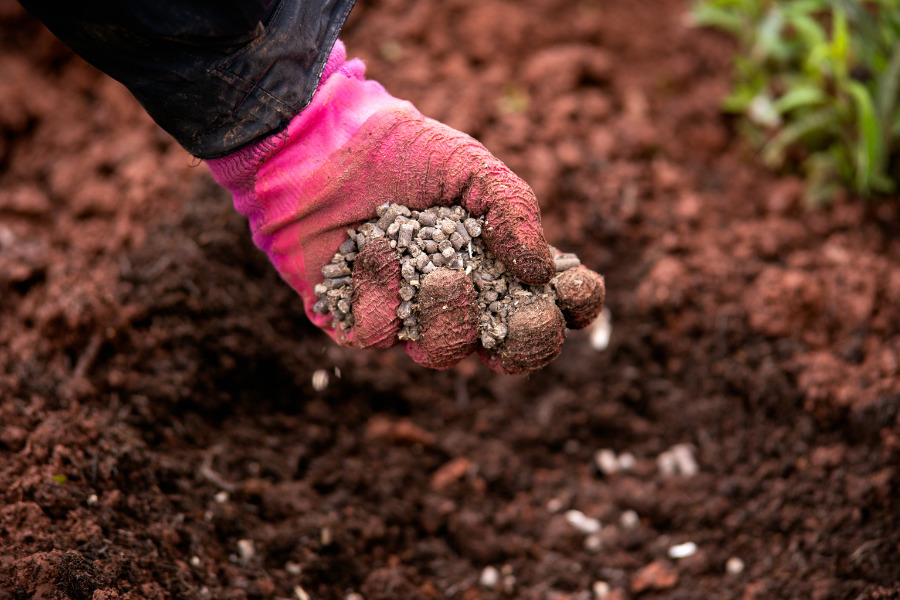
Building a Solid Soil Foundation
Starting a vegetable garden begins with building a strong foundation, and the key to that is healthy, nutrient-rich soil. Begin by testing your soil to determine its pH level and nutrient content. This information will help you identify any deficiencies that need to be addressed before planting. Most vegetables thrive in slightly acidic to neutral soil, with a pH between 6.0 and 7.0. If your soil is too acidic or alkaline, you can amend it with lime or sulfur, respectively.
Soil Structure and Fertility
To improve soil structure and fertility, incorporate organic matter such as compost, well-rotted manure, or aged leaves. Organic matter not only adds vital nutrients but also helps to improve drainage and water retention. It’s crucial to avoid using fresh manure, as it can introduce harmful pathogens and burn plant roots. Instead, opt for well-composted or aged manure that has had time to break down.
Soil Texture
When preparing your garden bed, it’s essential to loosen the soil to promote healthy root growth. Use a garden fork or tiller to break up compacted soil and mix in the organic amendments. Be mindful not to over-till, as this can damage soil structure and lead to compaction. Aim for a loose, crumbly texture that allows roots to penetrate easily.
Fertilization
Fertilization is a critical aspect of soil preparation, as it provides your plants with the nutrients they need to grow and produce a bountiful harvest. Many gardeners choose to use an all-purpose, slow-release organic fertilizer at the time of planting. This type of fertilizer provides a steady supply of nutrients throughout the growing season. Alternatively, you can also use a balanced granular fertilizer or liquid feed, following the package instructions for application rates and frequency. It’s essential to avoid over-fertilizing, as this can lead to excessive foliage growth at the expense of fruit production.
Starting a Vegetable Garden: Planting and Transplanting Tips
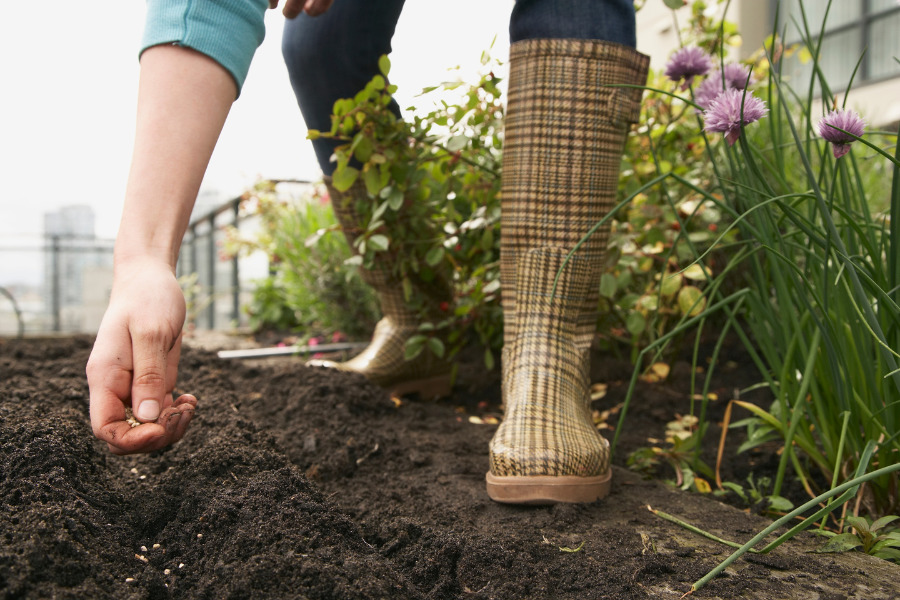
Timing
Timing is crucial when it comes to planting and transplanting your vegetables. Begin by checking the recommended planting dates for each vegetable variety, which are usually based on the average last frost date in your area. Some vegetables, like peas, lettuce, and spinach, are cold-tolerant and can be sown outdoors a few weeks before the last frost. In contrast, warm-season vegetables like tomatoes, peppers, and cucumbers should only be planted after the danger of frost has passed.
Start Plants Indoors
Starting seeds indoors is a popular method for many gardeners, as it allows for better control over growing conditions and extends the growing season. Fill seed trays or small pots with well-draining seed-starting mix. Follow seed packet instructions for planting depth and spacing. Maintain consistently moist soil for seedlings. Provide steady light from a sunny windowsill or artificial grow lights. When seedlings develop true leaves and conditions are suitable, begin hardening them off. Gradually expose them to outdoor temperatures and sunlight for one to two weeks.
When transplanting seedlings, carefully remove them from their containers. Ensure not to damage the roots during this process. Dig a hole slightly larger than the root ball, and gently place the seedling in the hole, ensuring that the top of the root ball is level with the surrounding soil. Fill in the hole with soil, pressing gently to remove any air pockets. Water the seedlings thoroughly to help them establish and settle into their new environment.
Direct Sow
Direct sowing is another option for planting your vegetable garden, and it’s particularly suitable for large-seeded vegetables like beans, corn, and squash. To direct sow, prepare the garden bed by raking the soil smooth and removing any debris or large clumps. Create planting furrows or holes at suitable depths for each vegetable type. Follow the seed packet guidelines for spacing. Place the seeds into the planting holes or furrows, and cover them with soil, gently firming it down to ensure good seed-to-soil contact. Water the planted area thoroughly and maintain consistent moisture levels as the seeds germinate and seedlings emerge. As the plants grow, thin them according to the recommended spacing to prevent overcrowding and ensure optimal growth.
Caring for Your Vegetable Garden

Watering Garden
Regular watering is essential for the success of your vegetable garden. Most vegetables need consistent moisture, especially during the growing season. Monitor your garden closely and water as needed to maintain evenly moist soil. Be careful not to overwater, as this can lead to root rot and other problems. Installing a drip irrigation system or using soaker hoses can help you maintain the proper moisture levels and conserve water.
Pest Control
Pest control is another crucial aspect of caring for your vegetable garden. Keep an eye out for common garden pests such as aphids, slugs, and caterpillars. You can control most pests through natural methods, like encouraging beneficial insects, using organic repellents, or hand-picking them off your plants. In some cases, you may need to resort to chemical pesticides, but be sure to follow the label instructions and only use them as a last resort.
Weeding
Weeding is an ongoing task in any garden, and your vegetable garden is no exception. Regularly remove weeds by hand or with a hoe to prevent them from competing with your vegetables for nutrients, water, and sunlight. Using mulch in your garden can also help suppress weed growth and retain moisture in the soil.
Pruning and Staking
Another important aspect of caring for your vegetable garden is pruning and staking. Some vegetables, like tomatoes, peppers, and eggplants, benefit from support structures such as stakes or cages to help them grow upright and prevent fruit from touching the ground. Pruning can also help improve air circulation, reduce the risk of disease, and encourage better fruit production. Be sure to research the specific pruning requirements for each type of vegetable you are growing.
Lastly, don’t forget to harvest your vegetables at the appropriate time. Each type of vegetable has an optimal harvest window, and picking them at the right time will ensure the best flavor and nutritional value.
Starting a Vegetable Garden: Harvesting and Storing Your Produce

Timing
Harvesting your vegetables at the right time is crucial for enjoying their full flavor and nutritional value. Familiarize yourself with the specific harvesting cues for each type of vegetable you grow. Some vegetables, like lettuce and spinach, can be harvested multiple times throughout the growing season, while others, like tomatoes and peppers, need to be picked when they reach their peak ripeness. Regular harvesting can also encourage some plants to produce more, extending your harvest season.
Harvesting Recommendations
When harvesting your produce, be gentle to avoid damaging the plants. Use clean, sharp tools like scissors or pruning shears to make clean cuts, and handle the produce carefully to prevent bruising. Harvesting during the cooler parts of the day, such as early morning or late evening, can help preserve the freshness of your vegetables.
Storage
Proper storage is vital for preserving the quality and shelf life of your harvested vegetables. Different types of produce have different storage requirements, so be sure to research the best methods for each one. Some vegetables, like potatoes and onions, prefer cool, dark environments, while others, like tomatoes and peppers, should be stored at room temperature. If you have a large harvest, consider preserving your produce through canning, freezing, or dehydrating to enjoy your homegrown vegetables throughout the year.
Document and Track
Lastly, keep track of your harvests and make notes about the performance of each vegetable variety. Use this information to improve future garden plans, concentrating on the most productive and tasty varieties. By paying close attention to harvesting and storage practices, you’ll be able to enjoy the fruits of your labor for weeks or even months after your garden has stopped producing.
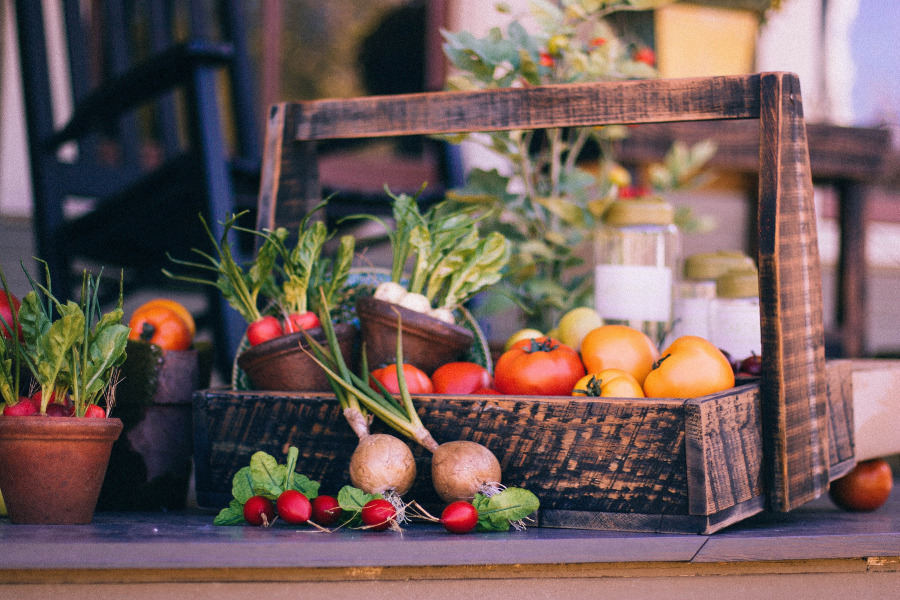
Starting a vegetable garden is an incredibly rewarding endeavor that provides numerous benefits, including fresh, nutritious produce, physical activity, and a deeper connection to nature. By carefully considering factors such as location, garden layout, plant selection, soil preparation, and proper care, you can maximize your garden’s potential and enjoy a bountiful harvest throughout the growing season. Remember that gardening is a learning process, and each year provides an opportunity to refine your skills and knowledge.
As you embark on this gardening journey, don’t be afraid to ask for help from experienced gardeners or consult reputable resources to guide your decisions. Embrace the challenges and celebrate the successes along the way. Your hard work and dedication will not only yield delicious, homegrown vegetables but also enrich your life with a newfound sense of accomplishment and satisfaction. Happy gardening!


